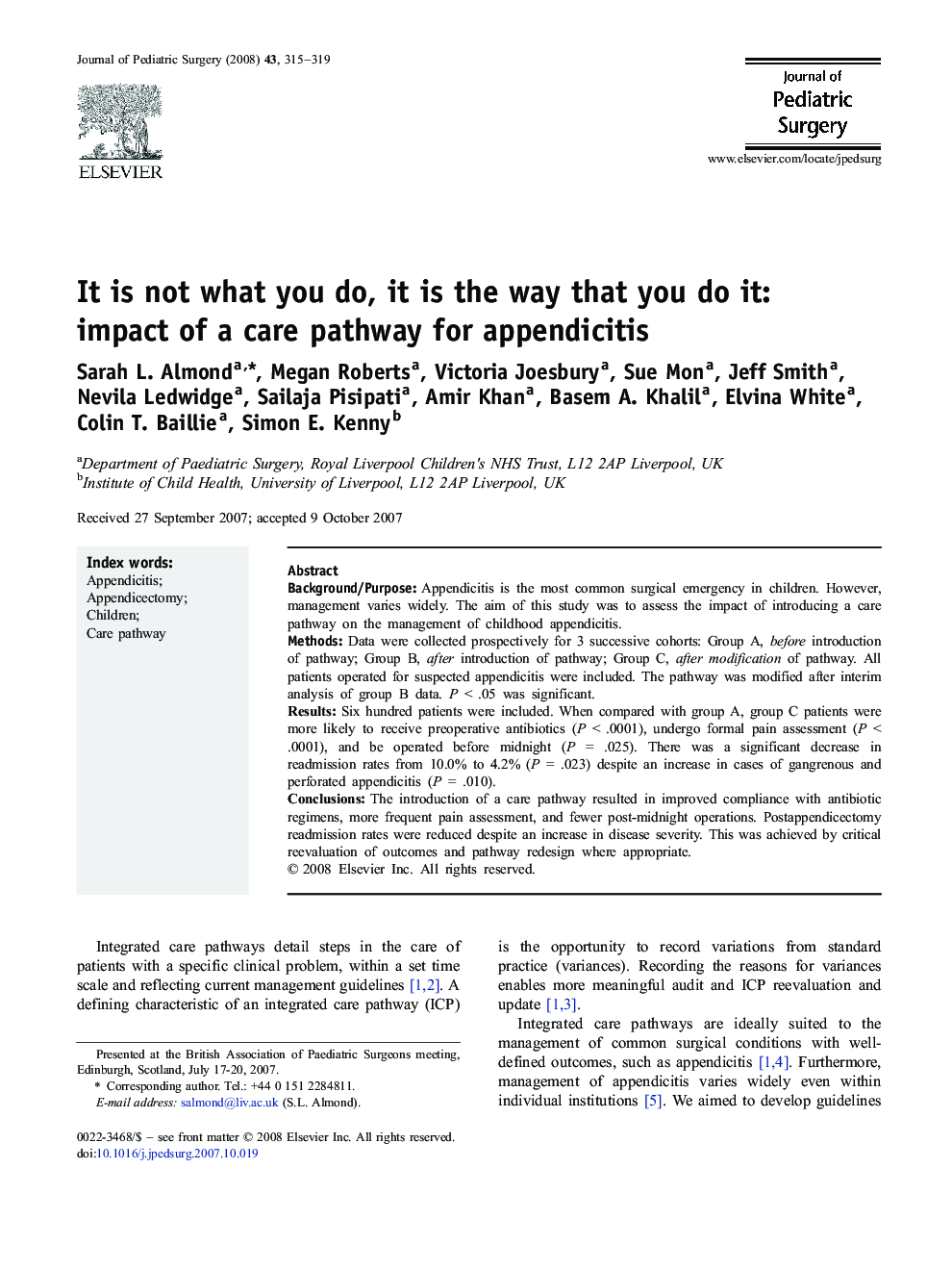| Article ID | Journal | Published Year | Pages | File Type |
|---|---|---|---|---|
| 4158951 | Journal of Pediatric Surgery | 2008 | 5 Pages |
Background/PurposeAppendicitis is the most common surgical emergency in children. However, management varies widely. The aim of this study was to assess the impact of introducing a care pathway on the management of childhood appendicitis.MethodsData were collected prospectively for 3 successive cohorts:Group A, before introduction of pathway;Group B, after introduction of pathway;Group C, after modification of pathway.All patients operated for suspected appendicitis were included. The pathway was modified after interim analysis of group B data. P < .05 was significant.ResultsSix hundred patients were included. When compared with group A, group C patients were more likely to receive preoperative antibiotics (P < .0001), undergo formal pain assessment (P < .0001), and be operated before midnight (P = .025). There was a significant decrease in readmission rates from 10.0% to 4.2% (P = .023) despite an increase in cases of gangrenous and perforated appendicitis (P = .010).ConclusionsThe introduction of a care pathway resulted in improved compliance with antibiotic regimens, more frequent pain assessment, and fewer post-midnight operations. Postappendicectomy readmission rates were reduced despite an increase in disease severity. This was achieved by critical reevaluation of outcomes and pathway redesign where appropriate.
